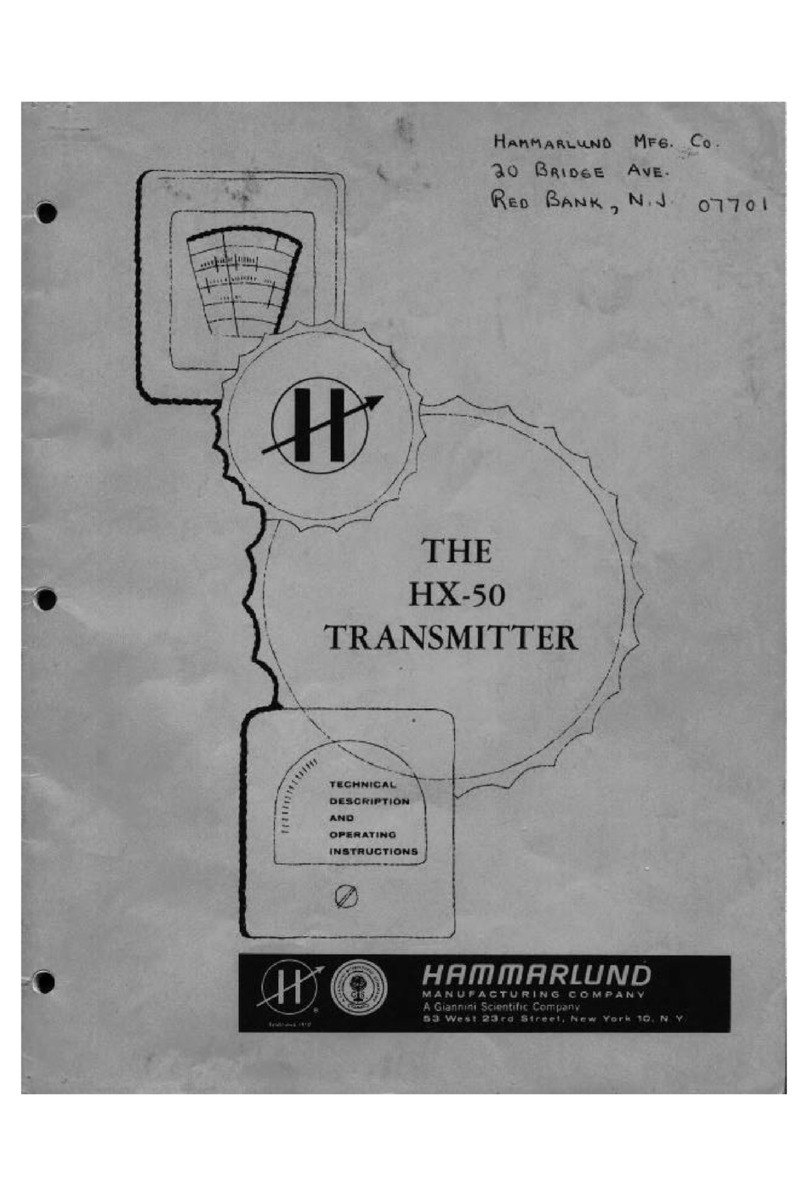
HX-500
TRANSMITTER HQ-170 RECEIVER
--------------_
..
-------
~
~
EXT,
CONN.
REC.
ANT.
son
ANT.
ALe
ADJ.
SLO-BLO
o e
2 4 6 8
1012
14
0
(;)
0 61{4
AMP.
lei
~J;-
;~
~@
~
0 0 e
~
OIlJOOI/JO
10',£GoOI
~!
~~
" • 1 • II
13
o (;) @
lO1~
~
II
SHIELDED CABLE
~
~
!ot--GROUND
SIDE
= OF
WINDING
-+
~
1'-. I
0-300
MA
DC
OR
O·3V
METER
METER READINGS
IDUNG
CURRENT
-60
MA.
FULLY
LOADED
-200
TO
230
MA.
(WITH
MATCHED LOAD
AN
0
IN
OSB-MOX
POSITION)
EXTERNAL
~
1,7,13
2
3
4
5
6
8
9
10
II
12
14
WIRING
CONNECTIONS
FUNCTION
GROUND
NORMALLY
OPEN
CONTACT}
CENTER
CONTACT
R:~:Y
NORMALLY
CLOSED
CONTACT
-100
V.
-IOOV.
FOR
RECEIVER
BLOCKING
REMOTE
CW
-
40
CYCLE FS K KEY
RECEIVER OUTPUT TRANSFORMER SECONDARY
STATION
RECEIVER
SPEAKER
FSK
RELAY
CONNECTION
FSK
RELAY
CONNECTION
CATHODE
CURRENT
OF
VI5
S.
VI6
(6146'S)
Figure
2.
Typical
Amateur
Station
Wiring
'l;l
II>
(Jl:l
~
Q1
FREE DOWNLOAD
COURTESY OF N9SOR
WWW.HAMMARLUND.ORG




























